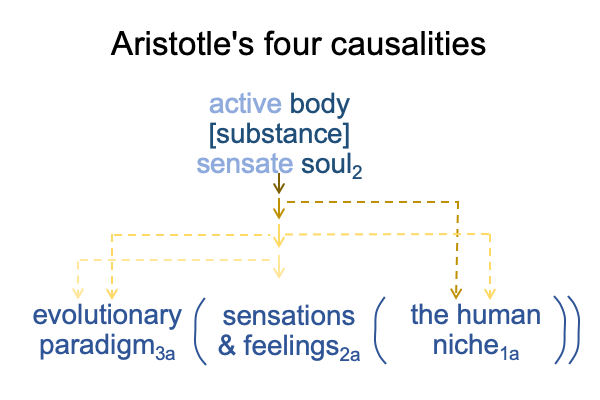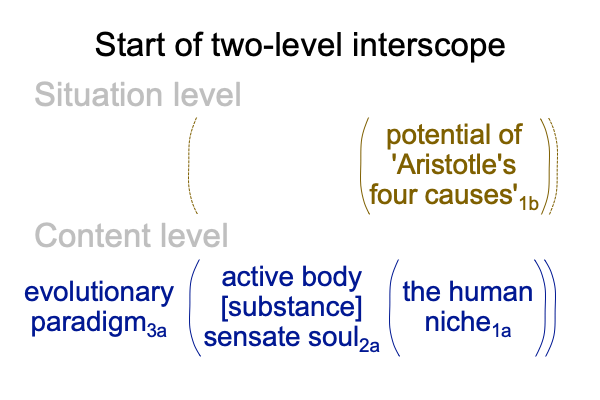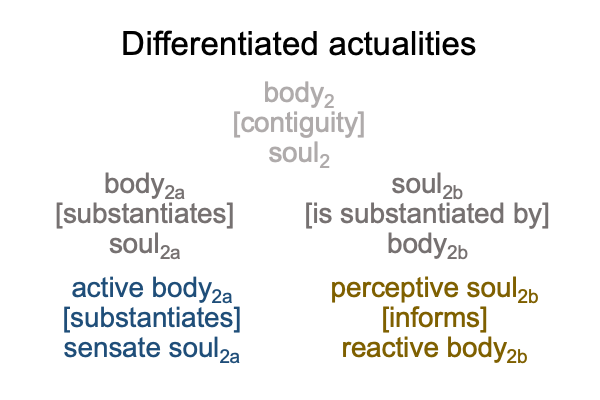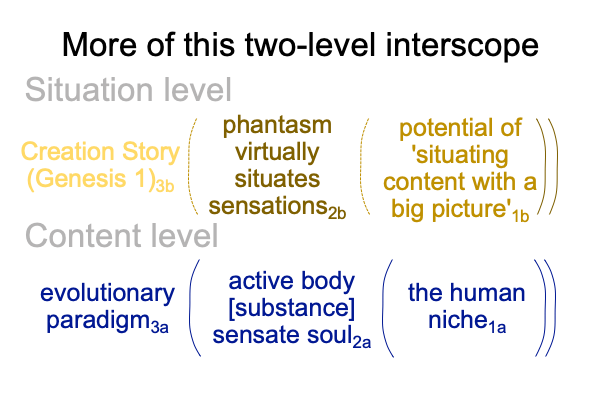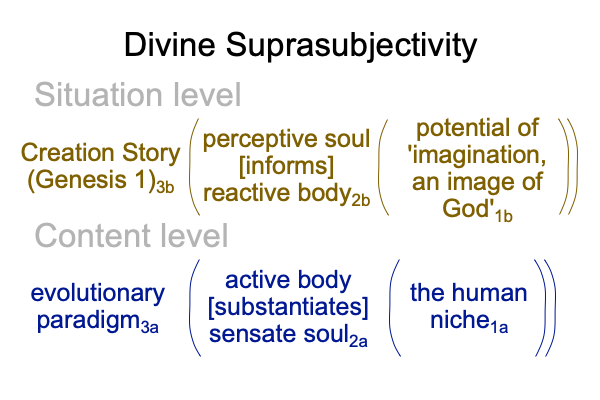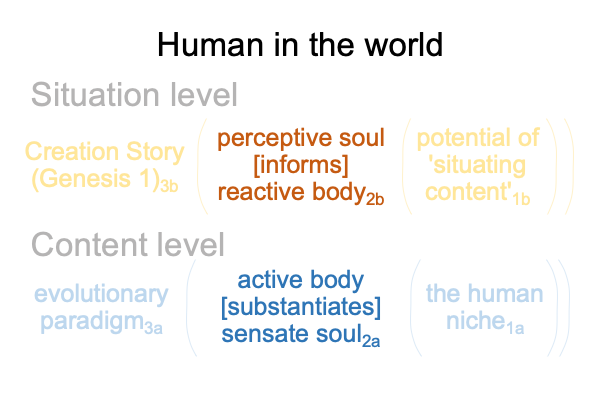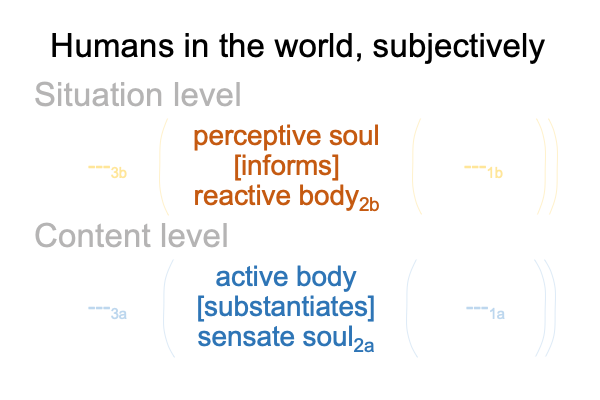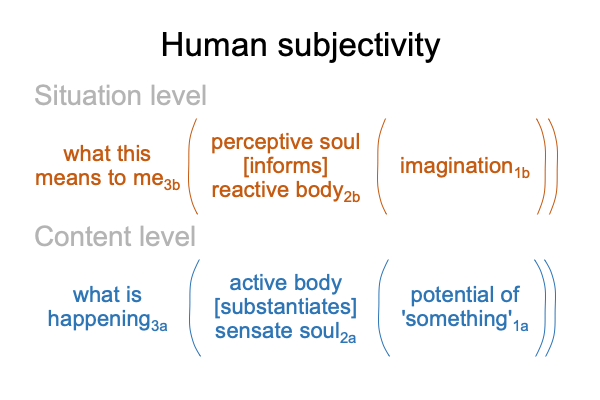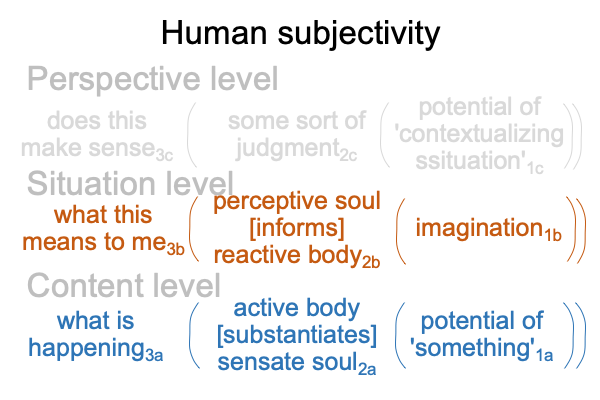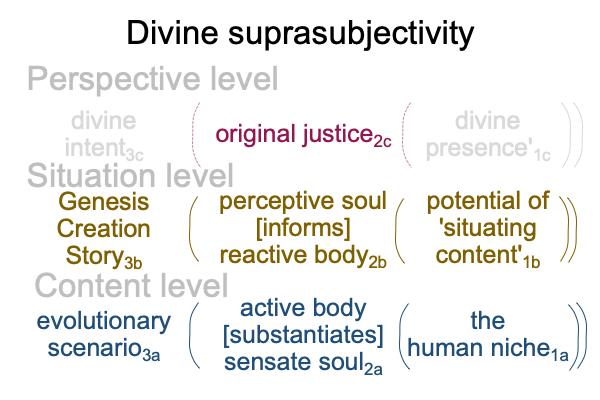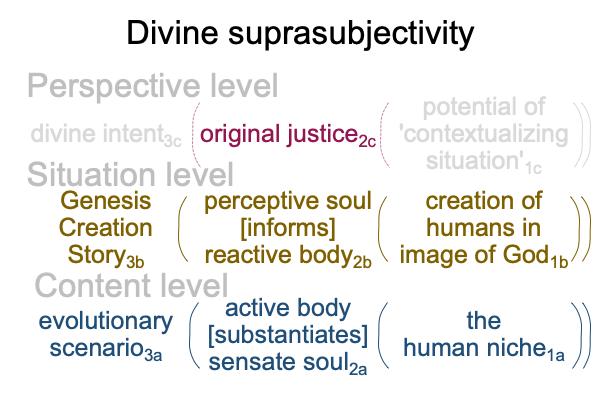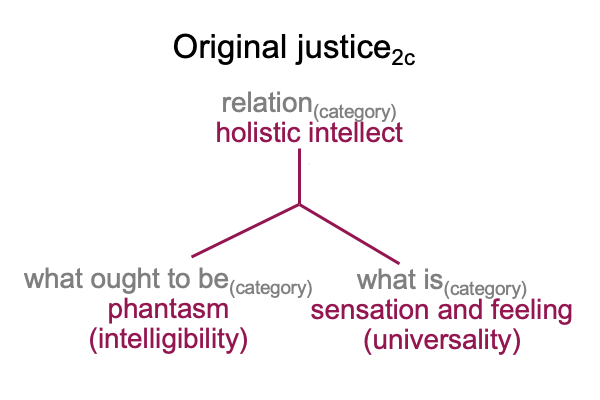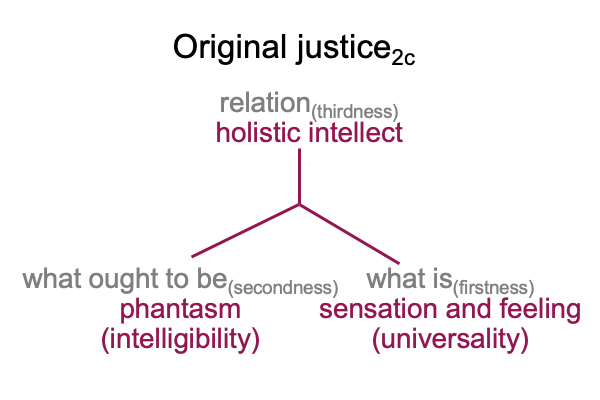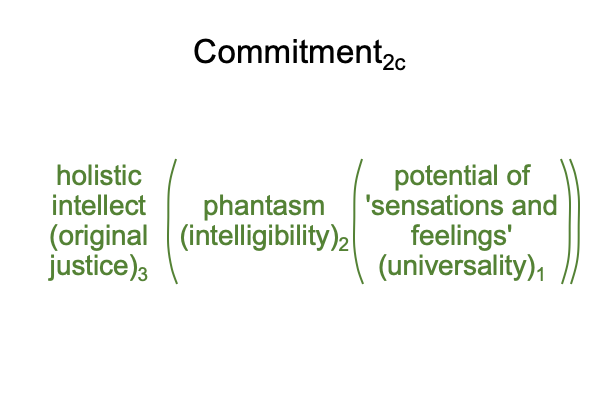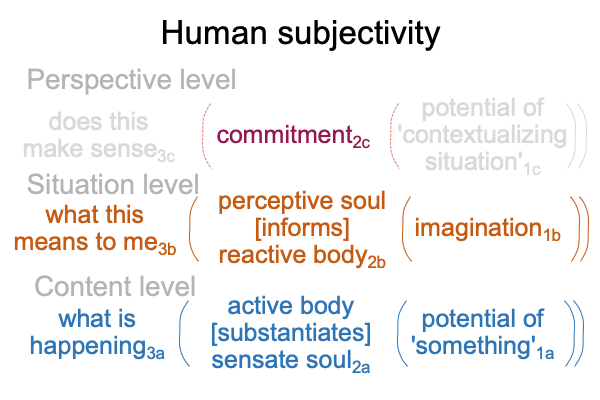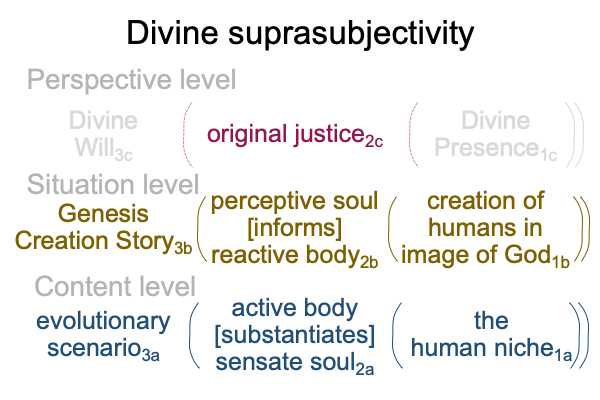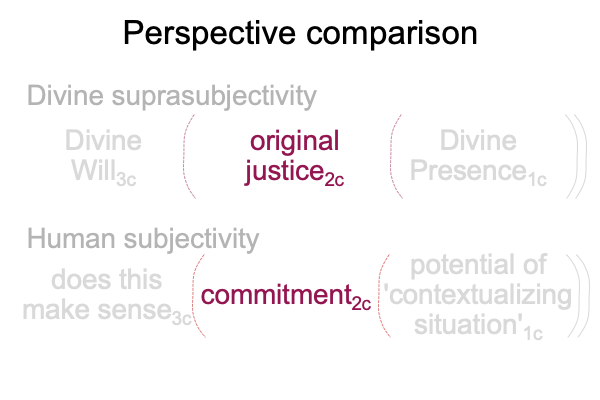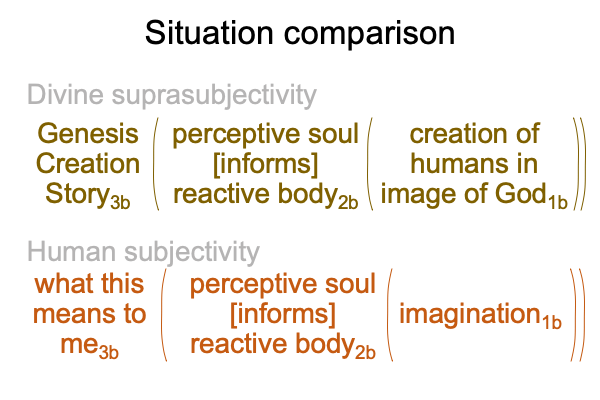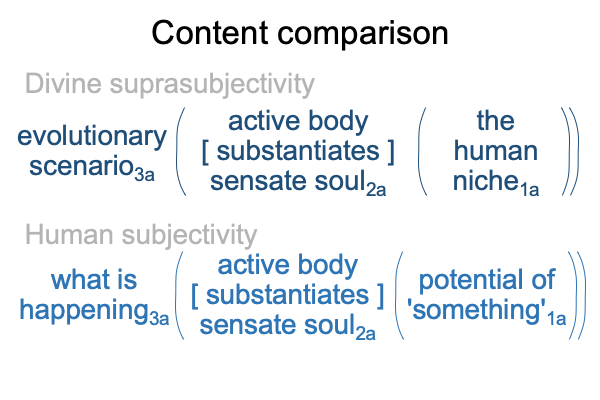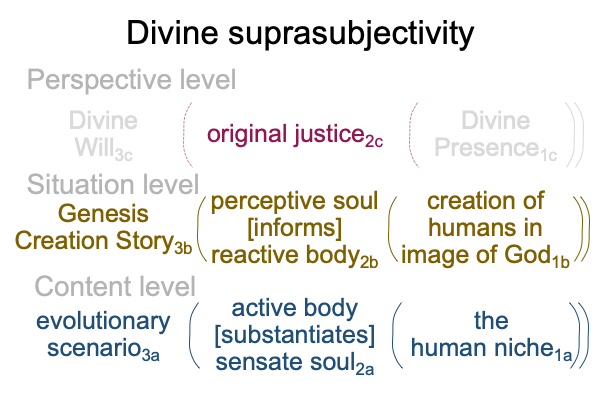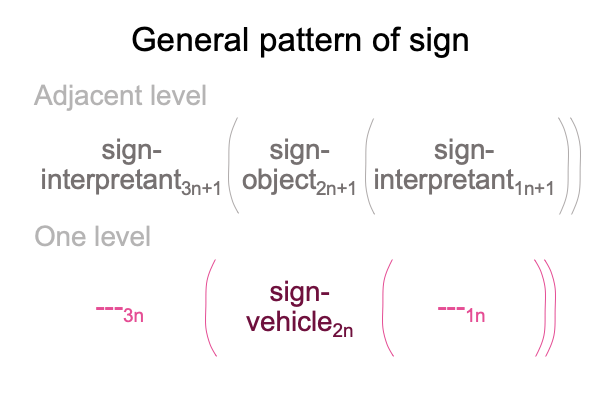Looking at Daniel Houck’s Book (2020) “Aquinas, Original Sin and the Challenge of Evolution” (Part 3 of 23)
0018 When Aquinas addresses original justice, he follows Augustine in jumbling together the two creation movements in Genesis. The prelapsarian Adam and Eve are created as images of God.
0019 What does Houck say?
First, original justice is natural. Well, it is not merely natural. It is “preternatural“. In other words, it is not like the primal justice of the animals. One animal may harm another in the pursuit of its own good. In this, nature appears to be cruel, heartless and mechanistic. We counter this reality with charity, empathy and cleverness.
Nature is full of goods and evils. An evil is a privation of a good. Each species appears designed to protect against certain evils. Turtles have shells to hide in. Each species is adapted to exploit some natural advantage (or good). Some turtles love to eat veggies. We are not so different than the turtle in this regard. Our bodies are designed to avoid certain dangers and seek certain opportunities. These active designs are felt in our bones. They move our flesh.
They guide our senses.
0020 A movement of the sensate soul asks, in innocence, “Do I feel that I should avoid what I am sensing or do I feel like I should seek what I am sensing?”
The activity of the body [substantiates] the sensate soul. Our bodies sense. Our sensate soul feels. So, the contiguity between them converts the operations of the five senses (along with internal proprioceptors) into qualia or feelings.
All this is natural, or maybe, a little more (preter) than natural. Once feelings are triggered in the sensate soul, the active body serves as a sign-vehicle. The active body stands for something other than itself. The active body signifies what the sensate soul feels.
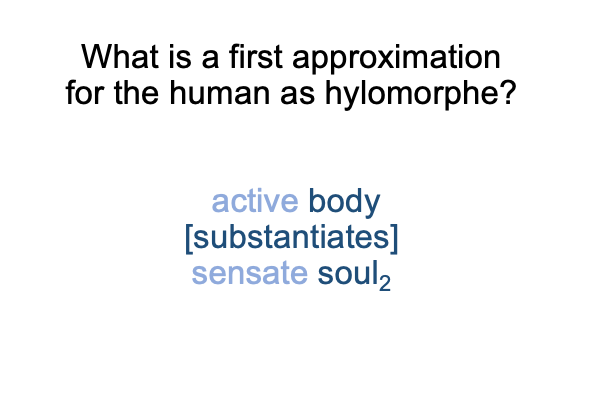
0021 Second, and in apparent contradiction, original justice is supernatural. It takes us beyond the preternatural.
What does it mean for me to say, “Nature is scarce, horrifying and petty, leading me to sense futility, danger and nastiness. I want to avoid the privation of goods. At the same time, nature is bountiful, beautiful and awesome, inspiring me to sense thanksgiving, admiration and wonder. I seek goodness.”?
0022 The secondary causality of active body [substance] sensate soul addresses the causal nexus between our five senses and our immediate feelings.
The primary causality of original justice (or something like original justice) places the actuality of our sensations and feelings into a category-based nested form. Our ancestors adapt to the fact that our world presents itself as things and events2 within normal contexts3 and potentials1. Our active bodies register things and events2 (including communicative gestures and words). Our sensate souls conjure an appropriate, immediate, normal context3 and potential1. But, not surprisingly, this immediate normal context3 and potential1 is… well… not necessarily what a scientist would have them be. (But, there is a remedy that may please the scientist.)
0023 For example, before modern times, many people think that salamanders come from fire. They notice a pattern. When a log is thrown into a fire, sometimes a salamander runs out. That is the actuality2. So, in the normal context of the four elements3, the actuality of the salamander2 emerges from the potential of one of the four elements, fire1.
0024 So, what do the four elements do?
They provide a way to formulate (or explicitly symbolize) the normal context3 and potential1 that accompany an actuality2.
0025 Aristotle proposes his four causes as an alternative to the four elements. They work in the same manner, but they are far superior in elucidating the potential1b of sensations and feelings2a.
Here is how that looks.
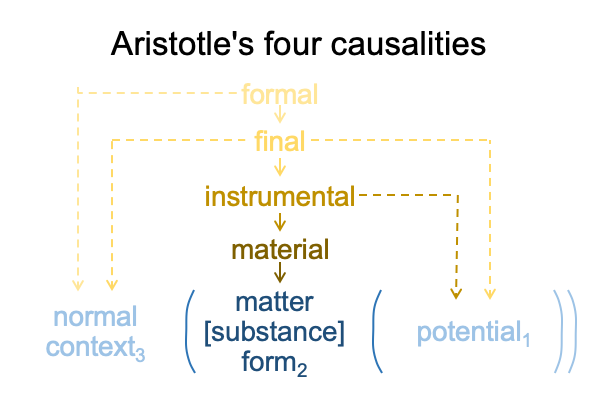
0026 What do Aristotle’s four causes do?
To start, if one encounters a thing2, that thing2 may be regarded as a hylomorphe, composed of two contiguous real elements, matter and form.
Why matter?
Matter is what our active bodies sense. If the thing is not present, then we cannot use our five senses to detect it.
Why form?
Form is what our sensate souls feel. The sensate soul notices all the clues to form, such as shape, color, odor and so on. In doing so, the sensate soul raises some questions, “Do I avoid? Do I approach? Do I safely ignore?”
0027 Next, Aristotle’s four causes allows one to synthesize what must be true for this actuality2.
The thing2 has matter, a physical aspect, and being, a relational aspect. Matter and being are two poles of a continuum. Material causes link matter and being to form. The contiguity, labeled, “substance”, can be interpreted in a myriad of material ways. Indeed, scientists love to fill this contiguity with the machinations of various neurons and glands and receptors and inhibitors and so on. But, in the Arisotelian paradigm, a “substance” tends to eliminate contradictions to allow the two real elements, active body and sensate soul, to remain contiguous.
A thing2 has its own operations, which can be observed with our senses. These processes exhibit certain patterns, our senses trigger our feelings, and then we try to situate sensations and feelings2a. Instrumental causes follow the logic of secondness, the laws of contradiction and non-contradiction. Instrumental causes bring the actuality2 into relation with its potential1.
The thing2 has a purpose, a teleology, and an end. Final causality entangles normal context3, actuality2 and potential1. With final causes, we begin to see the big picture. We begin to understand.
The thing2 has a formal design. This design has formal requirements. If these requirements are not met, then the good suffers a privation.
The question of evil, arises when a potential1, a good, is not fulfilled as an actuality2, within its normal context3. A common metaphor for sin is “missing the mark”. The normal context3 is archery. The actuality2 is arrow [strikes] target. The potential1 is accuracy. Sin is a more than a failure of accuracy. It is a failure to achieve God’s design.
0028 Aristotle’s four causes are one way to figure out what is true about an actuality2.
0029 Now, I propose an intrepid question and ask, “If I apply Aristotle’s four causes to the actuality2a, active body [substance] sensate soul2, as if it is matter [substance] form, what type of understanding could I achieve?
In particular, could I generate an understanding that would make a scientist smile?
What happens when I apply Aristotle’s causes again, as if I am refining the actuality of sensations and feelings2 into a content-level nested form, with an appreciation of scientific inquiry in mind?
0030 I start with the hylomorphe, active body [substance] sensate soul. That goes into a content-level actuality.
Next, I turn to Aristotle’s four causes to weave a normal context3a and potential1a.
The material cause concerns the contiguity between the active body and sensate soul2a. I know that the active body senses itself and its surroundings. I know that the sensate soul expresses corresponding qualia. So, I ask the questions, “If my active body encounters ‘something’, then what am I encountering? What is it supposed to be? Should I fear, approach or safely ignore?”
This implies that the hylomorphe may be understood as a foundation for a nested form for human psychology. And clinical psychology. And anatomy and physiology. Indeed, nested forms can be constructed for almost any science studying animals, particularly mammals.
So, material causality tells me that humans are animals. Animals adapt to their niche. The niche is the potential of something independent of the adapting species in the environment of evolutionary adaptation.
0031 The instrumental cause connects whatever engages sensations and feelings2a to a potential1a. As the original nested form stands, the potential is the image of God. What do images require? Interpretation? Then, how do I interpret? I need a framework in which interpretation is possible. To the modern mind, the more scientific the interpretation, the better.
In the normal context of the Creation Story3, God is the One who Signifies, or Speaks, and, in response, the earth brings forth. This source of signification is way beyond speech, even though the Creation Story makes it seem like God speaks like a person in our current Lebenswelt. Yet, human evolution starts before language. Language evolves in the milieu of hand talk. So, if God is talking to nature at this time, He gives His commands in manual-brachial gestures, hand talk, and the earth sees what God intends and responds to His signs.
Okay, instrumental causality suggests that God’s handiwork involves signs.
That tells me that humans are semiotic animals.
For further discussion of this claim, consider Looking at John Deely’s Book (2010) Semiotic Animal, appearing in Razie Mah’s blog in October, 2023.

